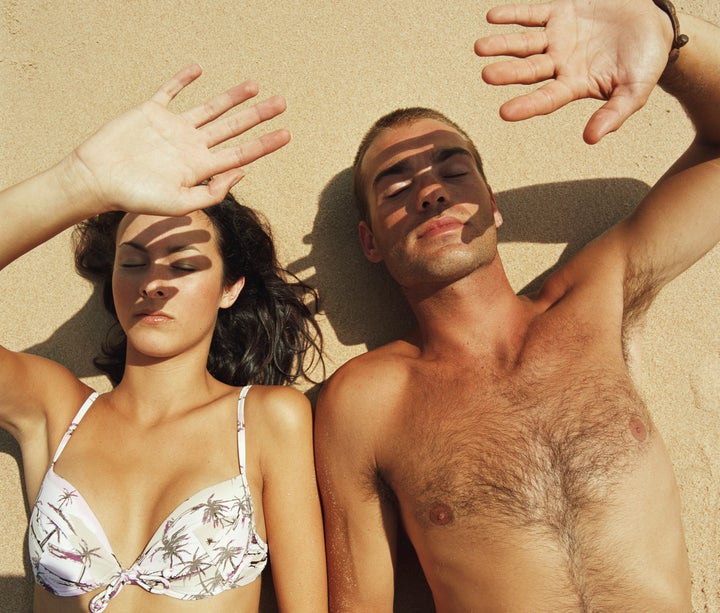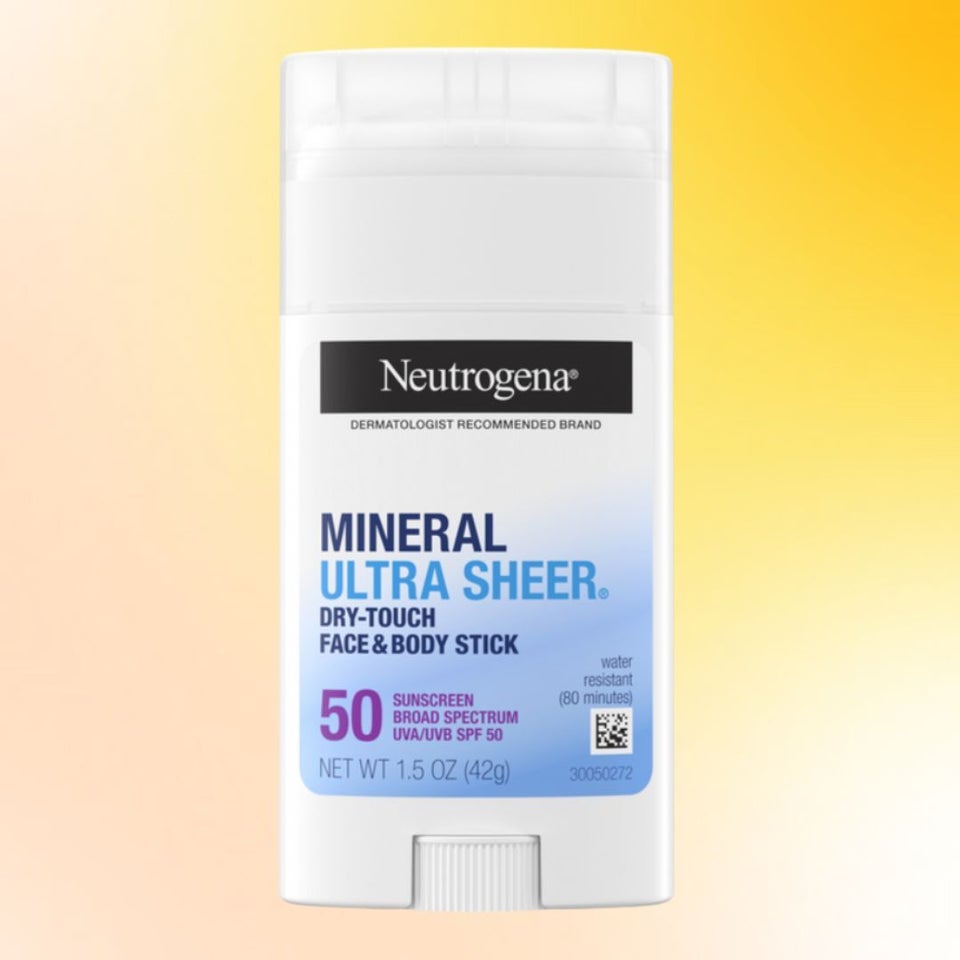
If you check the weather on your phone frequently, you’ve probably been seeing lots of orange and red bars on those daily temperature predictions. We don’t need to tell you that it’s hot out there. But does temperature affect how much sunscreen you need? And, if the UV index is also high, what does that mean for your skin?
Making sense of the UV index
Even though both the temperature and the UV index can be higher in the summer, meteorologist Sven Sundgaard explained that air temperature and the UV index are not tied to one another directly.
“That ‘UV’ stands for ultraviolet radiation,” he explained. “The index, which runs from a low of 1 to a high of 11+, is a good indication of how quickly you can get a sunburn. The higher the number, the quicker the burn, so more precautions should be taken.”
The index, which is compiled by the Environmental Protection Agency (EPA), is calculated on a next-day basis for dozens of cities across the United States. The EPA considers 6-7 on the UV index to be “high risk.”
To track your risk of skin damage, pay attention to the index and the time of day, not necessarily the temperature. “The highest sun angle, or strongest sun, happens midday, which is between 12 p.m. and 2 p.m. for most places,” Sundgaard said. “But the high temperature of the day usually occurs between 3 p.m. and 6 p.m. on a sunny day. You may be most uncomfortable from the heat at 5 p.m., when it’s 95 degrees, but the sun is actually stronger at 11 a.m. and you’ll burn more quickly then. You can burn nearly 1.5 times faster at 11 a.m. versus 5 p.m.”
UV and temperature
“There’s a misconception that UV index is a measure of heat,” said dermatologist Angela Kim. “UV index is actually a measure of intensity of the sun’s emitting energy.” Dermatologist Arash Akhavan weighed in: “High heat doesn’t always mean there’s a high UV index. In fact, the UV index can be the exact same on a very hot day and a cold day.”
Dermatologist Rebecca Marcus added, “There isn’t a clear and definite link between heat and UV and an increased risk of skin cancer vs. UV radiation alone. But if you’re considering the difference between a sunny day in the winter vs. the summer, then yes, we need to be more vigilant about sunscreen in the summer, because the sun is stronger in summer and the UV index is higher, meaning that there’s greater potential for damage.”
And if temperature isn’t necessarily a factor, why are there more sunburns during a scorching-hot summer?
“Higher temperatures can bring about behaviors that involve higher risk for burns, like going to the beach or pool,” said Nava Greenfield, a board-certified dermatologist at Schweiger Dermatology Group in New York City. “When that behavior is combined with a high UV index, it can make burns more likely.”
In addition, higher temps bring risk factors of their own. “Heat stroke is more common in high temperatures,” said dermatologist Sandy Skotnicki. “It often leads to sunburns because people get groggy from heat stroke and forget their sunscreen.”
UV radiation and your skin
Wondering how the index was developed?
“It’s calculated using a person with a Fitzpatrick Skin Type 2 as a reference point,” Marcus said. “That’s a type of skin that’s fair, burns easily and tans minimally. When the UV Index is low, this ‘reference’ person would have a low risk of burning when exposed to peak sun between 10 a.m. and 4 p.m. for one hour. As the UV index increases, so does the risk.”
Those index numbers are worth watching, dermatologists said.
“The higher the index, the more those damaging rays are penetrating the atmosphere,” Skotnicki said. “Those rays cause oxidation damage to our cellular genetic material and DNA.”
If you want to check on the UV index but don’t have a smartphone handy, try this trick: “If your shadow is taller than you are, the UV index is likely low,” Kim said. “If your shadow is shorter, the UV index is likely high, and you should seek shade and wear sunscreen SPF 30+ or higher.”
The ABC’s of UV
Kim went on to explain that there are three types of UV rays.
“UV-C is mostly blocked by the ozone layer, so UV-A and UV-B are the ones we talk most about,” Kim said. “As long as it’s light out, UV-A can affect your skin. UV-B generally affects your skin late morning and early afternoon times like 10 a.m. to 4.p.m.”
According to experts, none of these rays are friends for your skin.
“UV-A penetrates deeper into skin, causing hyperpigmentation and lines and wrinkles by breaking down collagen and elastic fibers,” said dermatologist Loretta Ciraldo, founder of Dr. Loretta skin care. “Its role in causing melanoma is also becoming more evident. UV-B specifically causes the death of skin cells in the upper layer of the skin, causing redness, burning and peeling. We believe it’s a major cause of squamous cell carcinoma of the skin.”
Why we need sunscreen
All this talk of UV radiation made us wonder why sunscreen is our most frequent go-to for protection. What does it do for us, anyway?
“Sunscreen helps protect the skin from UV damage, which, over time, can lead to skin cancer, hyperpigmentation, melasma, rosacea and premature aging,” dermatologist Nkem Ugonabo explained.
“We dermatologists actually use the term ‘photoaging’ to describe the role UV radiation plays in the development of wrinkles, age spots, rough texture and sagging,” Ciraldo said. “In addition to helping to prevent skin cancer, sunscreen also helps to prevent unwanted aging changes in the face, neck, chest and hands.”
If you think getting a sunburn now and then is no big deal, think again.
“Having even one blistering sunburn can double a person’s risk of developing deadly melanoma,” Kim said.
Even if you’re not seeing damage now, that doesn’t mean it won’t show up someday.
“Some sun damage can be repaired by the skin cells, but, because your skin cells have memory, some damage doesn’t become apparent for 10 to 20 years,” Greenfield said.
Apply, and reapply your sunscreen this summer ― especially when the UV index is high, and especially if you’re sweating
When the UV index is at least 6 or 7, reach for that tube of sunscreen.
“It may not be as effective for as long as it typically is when the UV index is very high,” Greenfield said. Heat can play a role in reapplication needs, too. “When it’s super-hot out, we need to wear more sunscreen because we’re sweating it off,” Kim said.
No matter what the season, sunscreen is always a good idea. “It should be applied every day, regardless of whether it ‘feels hot’ or not,” Ugonabo said. “Even on cloudy days, up to 80% of the sun’s harmful UV rays can penetrate the clouds.”


